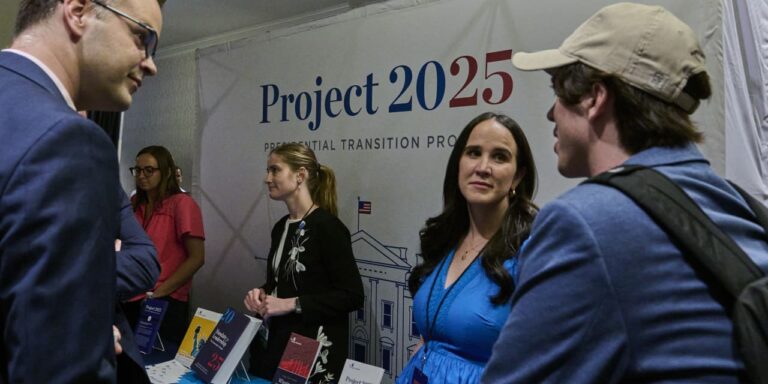Influential think tank, The Heritage Foundation, has recently unveiled an extensive, conservative policy platform labeled “Project 2025.” The project, which places significant constraints on the Federal Reserve’s mandate and monetary policies, has been the subject of much debate amongst economic heavyweights.
Project 2025, a forceful 900-page manifesto of conservative aspirations – is evident in the book titled “Mandate for Leadership: The Conservative Promise.” This book, edited by veterans of the Trump administration, Paul Dans and Steven Groves, is the collective effort of nearly 400 conservatives, putting forth policy recommendations for the White House and each federal agency.
The Federal Reserve, often under scrutiny for management of the U.S. money supply and its financial regulatory moves since its establishment in 1913, has been the focus of harsh critique in Project 2025. The book lambasts the expanded mandate of the Fed over the years, while contending that the institution, owing to its political sensitivity, is prone to prioritizing growth stimulation ahead of general elections and financing budgetary deficits of the government.
“[Governmental] control of monetary policy always faces the unavoidable political pressures: the need to print money either to finance government deficits or artificially boost the economy in runup to elections,” according to the conservative think tank. “The only lasting solution is to dismantle the Federal Reserve’s authority and return this power to the people”.
Project 2025 puts forth numerous recommendations aimed at restricting the Federal Reserve’s influence. Key among these is the abolition of the dual mandate–that which tasks the institution with ensuring both price stability and maximum employment. The book robustly claims that this mandate accelerates damaging inflation as an unintended byproduct of staving off economic downturns.
Instead, the book posits, the Federal Reserve should zero in solely on controlling inflation. Any alteration to the dual mandate, however, would necessitate legislative change. Recently, there has been a growing focus from Fed officials on labor as part of the dual mandate. While inflation rates have notably slowed since 2022, they still hover above the Federal Reserve’s target of 2% annually as the labor market begins to stabilize after an overheated run.
Project 2025 also advises reducing the Fed’s balance sheet holdings—currently valued at over $7TN— and advocates for limiting future asset purchases to only U.S. Treasuries. The central bank’s balance sheet saw a drastic increase following the 2007-08 financial crisis and Covid-19 pandemic, as a result of quantitative easing (QE), when vital liquidity was injected into the US banking system via large-scale treasury and mortgage-backed securities purchases. The Fed initiated a careful reduction in its balance sheet holding, a process known as quantitative tightening (QT), in June 2022.
The initiative’s authors claim that QE tactics have propped up federal budget deficits at the cost of other economic borrowing, while purchases of mortgage-backed securities have driven up housing prices and rents due to lower mortgage rates.
Project 2025 further proposes the elimination of the central bank’s lender-of-last-resort role – a rescue function intended to instill confidence during periods of significant financial stress by offering liquidity to banks and other financial institutions.
Other innovative, though less politically palatable, propositions mentioned in the book include a pivot towards free banking, reinstating the gold standard and a more rule-based approach to monetary policy settings.
“In a free banking scenario, neither interest rates nor money supply are under governmental control,” the authors write. “Thus, the Federal Reserve is effectively abolished, and the Department of the Treasury is predominantly engaged in handling the government’s money.”
However, it remains to be seen how these radical proposals would fare in the political sphere, as well as their potential implications on the U.S. economic landscape.
